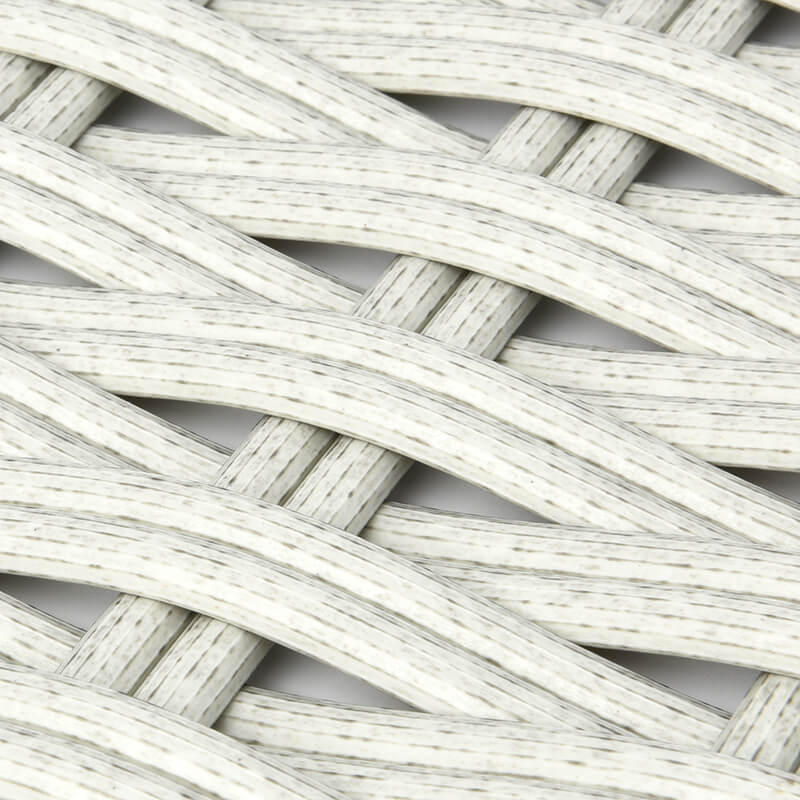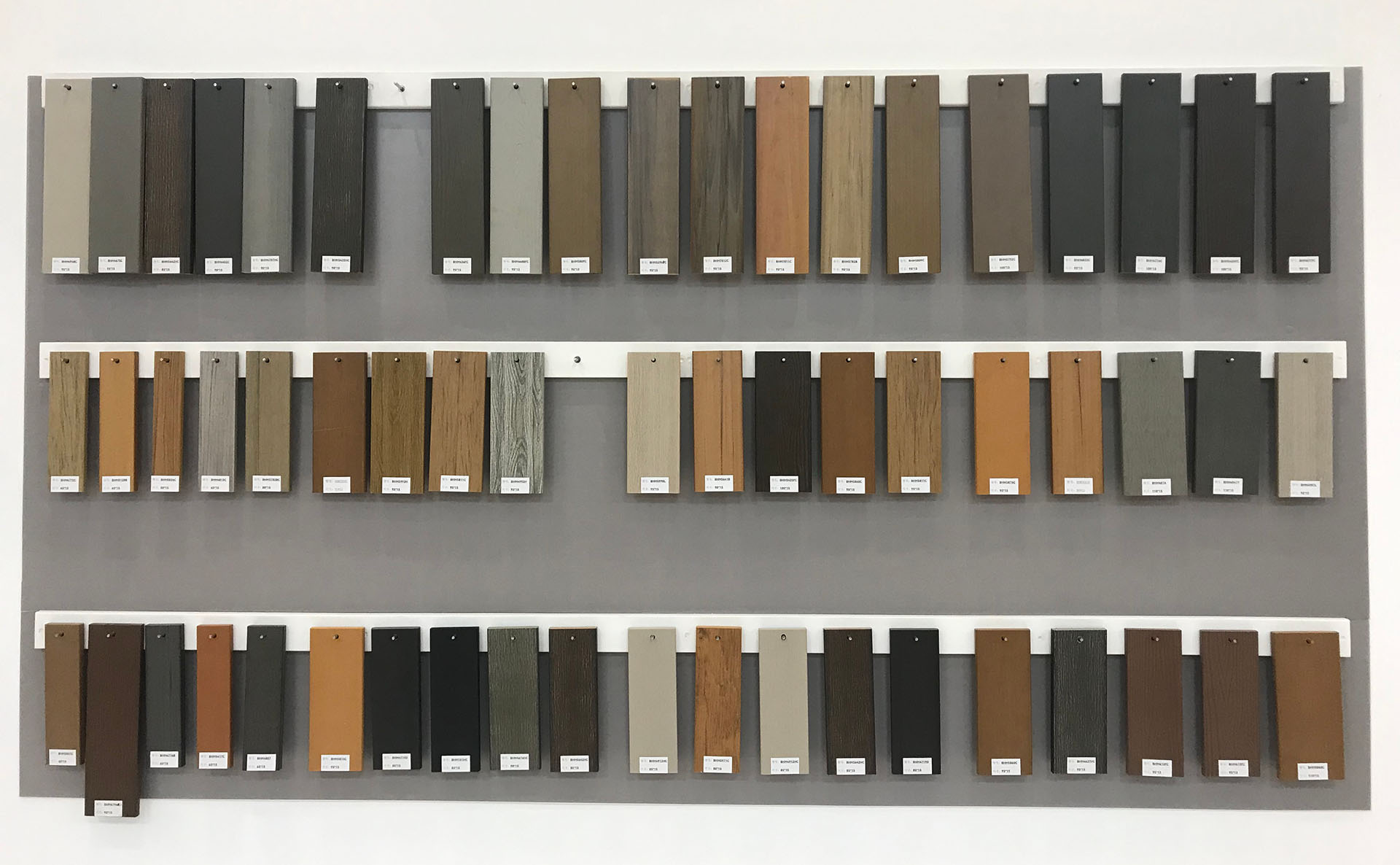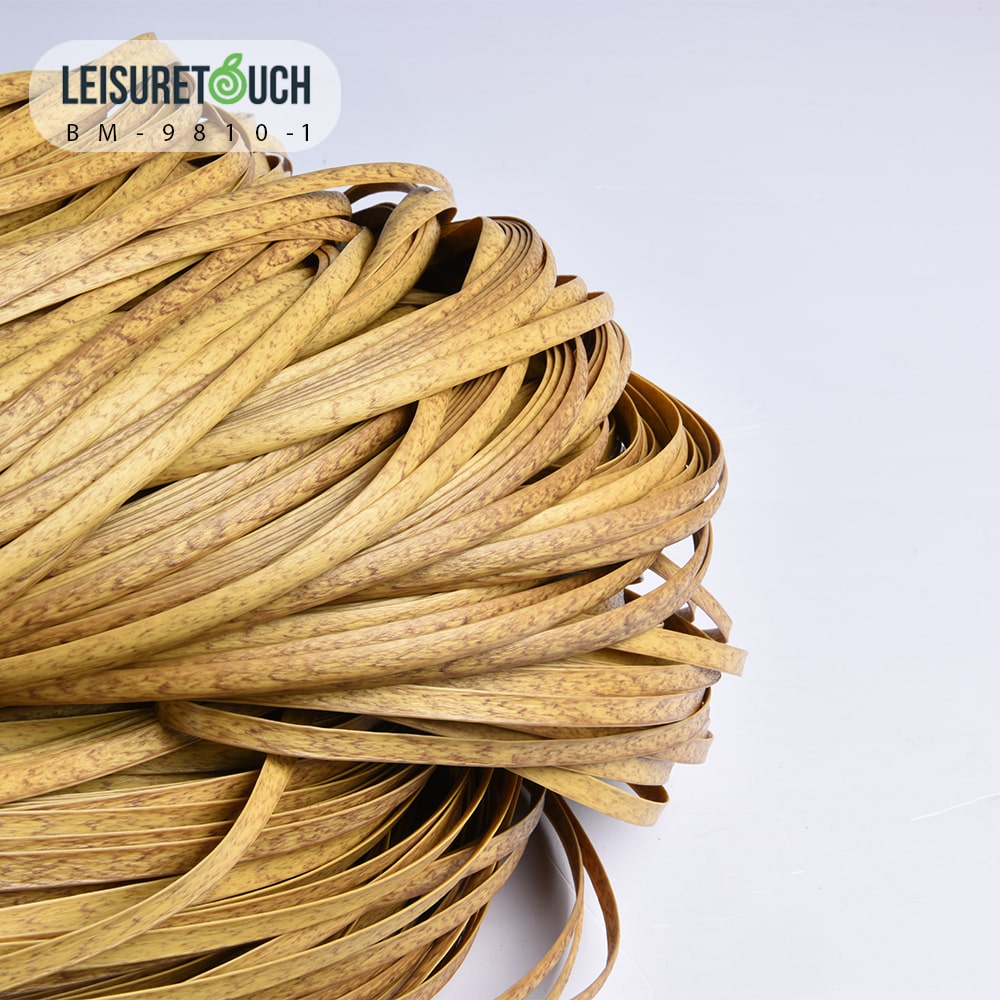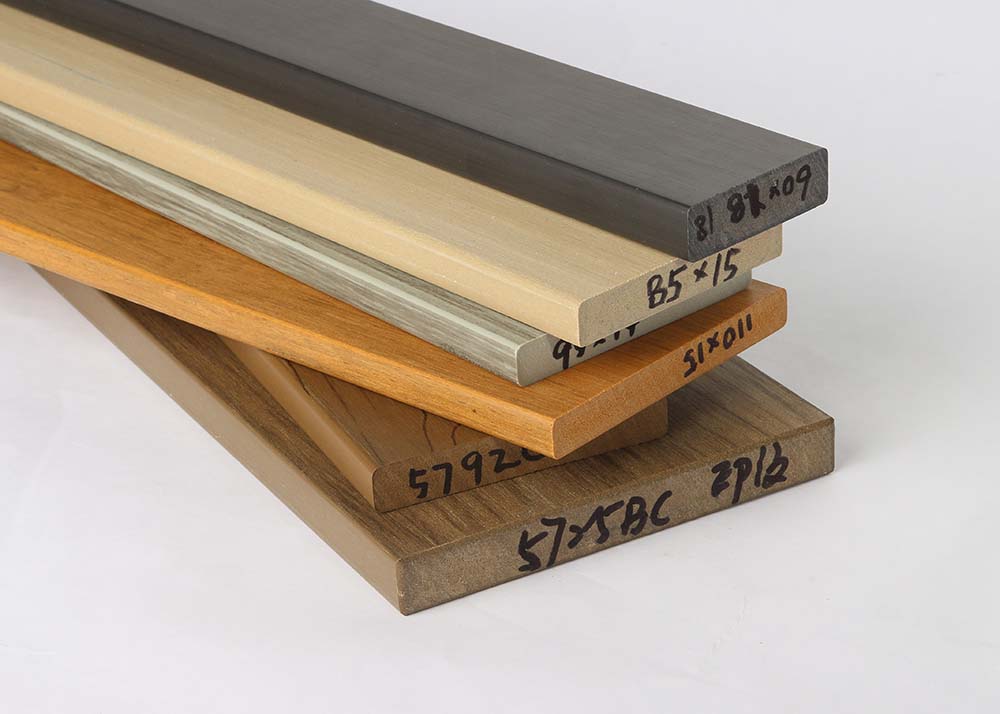Imagine decking out your patio with materials that captivate the eye and last through every season. Whether you wish to sit comfortably on a porch, poolside, or while grilling outdoors, the choice of material used on furniture and decks will define the overall experience. What if you could get fashion and add ultra-resistance in one package?
Submerge yourself in the approach of plastic rattan and composite decking—two front-runners in the race for resilient, eye-catching outside spaces. Both are ideal for people who appreciate the appearance and the durability of the ensuing work; every option has perks designed explicitly for this purpose.

See how these materials stand up to the elements, from sunny mornings to rainy evenings, blending seamlessly into your lifestyle. Ready to transform your outdoor spaces with choices that are as functional as they are fashionable?
1. An Overview of Plastic Rattan and Composite Decking
Two striking options stand out when deciding on materials for homeowners’ and designers’ outdoor spaces: plastic rattan and composite decking. Plastic rattan is one such kind, which is artificial, highly durable, and beautifully preserved in extreme weather conditions. This product, made from high-density polyethylene (HDPE), helps prevent things such as ultraviolet (UV) light and moisture from affecting the furniture placed outdoors, which makes the furniture look great at all times without the owner having to clean it constantly.

Composite decking’s main advantage is also based on its characteristics: recycled wood fibres are combined with plastics to provide a durable and eco-friendly material. This material can reproduce the feeling of a natural wooden surface; it obliterates many of the problems inherent in wooden deck construction.
This makes it highly resistant to warping, fading, and cracking under various climatic conditions, especially in areas that experience a broad range of climate fluctuations. When using composite decking, homeowners enjoy a strong and good-looking floor, which is long-lasting and improves their home’s value.
2. What is Plastic Rattan?
Manufactured rattan is presented as an aggressive opponent in outdoor design. It boasts durability and flexibility that competitors should have achieved in their operations. Unlike standard materials that wear out with time, synthetic rattan is made from contemporary fibreglass and polymer materials like HDPE, known for their strong ability to withstand wear and tear from ultraviolet radiation and water. It also protects the furniture piece and maintains the intensity of colour with relative ease, thus prolonging its duration in the garden.
Although it is a synthetic material, synthetic rattan has various advantages over natural rattan, such as its capability to mimic the complex patterns of the rattan woven design to perfection. It has the potential to be used as any other fabric that can efficiently be designed for any tropical or contemporary style and easily fit any outdoor setting.

Despite the modern-day demand for eco-friendly products, synthetic rattan fits in well, mainly when manufacturers use recycled materials that play an essential role in environmental preservation. Thanks to its high durability, possible use in various designs, and environmental-friendliness, it’s becoming more popular among people redoing their gardens and other open-air areas.
3. The Basics of Composite Decking
Composite decking goes further than the standard options for decking material since it is a possibility of oriental synthesis that takes advantage of strength and aesthetic qualities. The core of this material is small wood particles that are then bonded with macromaterials such as polyethylene or PVC for added protection from common enemies, including decay, insects, and mold. It also excels in retaining its shape and shade, minimizing the common issues of distorting or bleaching often found in standard wooden decks conformed purely from such wood.
Composite decking also stands out based on one more factor: the ability to support sustainable architecture. The used wood is mostly the leftover material, which would otherwise be waste, added to recycled plastics to create each unique board that bears the most minuscule environmental footprint. Other practical advantages go beyond just the durability: This material can be easily installed with systems that conceal fasteners to keep everything looking neater and cleaner. This also beautifies the outside view and, at the same time, adds to the safety factor by preventing sharp objects such as nails and screws from being exposed.
4. Durability: Weather Resistance
Technological improvements in material science have made plastic rattan and composite decking robust against various weather factors. In manufacturing plastic rattan, incorporating UV stabilizers ensures that the light effects do not fade its colours. This makes it especially ideal for areas where the working day involves much time in the sunshine, maintaining both form and beauty.
Meanwhile, composite decking has a polymer cap covering each board and a water-resistant feature that prevents stains or scratches. This shield dramatically enhances the durability of the decking by preserving it from the known problems that inhibit regular wooden decking, like mildew and insects. Thanks to this cap’s sturdiness, the decking remains functional and beneficial as it withstands pressure from weather patterns and usage fluctuations.
5. Structural Integrity
Using a woven formation in plastic rattan makes it sturdy, holds a lot of weight, and survives rigorous use without exhaustion. This weaving increases the material’s durability, embedded in the product, and enriches the textual and inviting look that attracts people in various outdoor environments. However, it still has high durability and flexibility, making it easy to adapt the outdoor space and designs of residential and commercial buildings for different purposes and occasions.
Composite decking combines layers bonded through co-extrusion to create a solid and dense composite core. This core is intended to sustain large loads and is ideal for fixing in regularly used areas such as public decks and busy patios.
This additional layer carries out impact proofing and waterproofing together with the extra insulating effect of the high-performance shell on composite boards, besides helping to preserve the structural integrity of the deck over the years and through various environmental conditions to meet the need for safety and durability with the slightest possibility of wear and tear.
6. Maintenance Requirements
As for the cleaning process of plastic rattan, it can be understood that it is straightforward, which means no complicated cleaning process would be needed to maintain the neat look of this product. Modern processing of rattan used in furniture makes the plastic surfaces easy to clean. For instance, stains on it can easily be wiped off without using detergents.

This is quite useful for outdoor furniture because these structures are exposed to changes in weather and traffic, which cannot be the same every day. Therefore, plastic rattans continue to be preferred by people looking to use furniture, which barely causes any inconvenience.
On the other hand, composite decking maintenance is more straightforward, but it comes with specific procedures to prolong the material’s durability and shine. Modern technological innovations have enabled the creation of composites that cannot be discoloured or invaded by fungi, which is necessary in exterior situations. Meticulous regular, periodic, and special cleaning helps maintain the board gaps’ cleanliness and the decking’s overall aesthetics, hence remaining a part of every home’s outdoor space.
7. Aesthetic Appeal

Another critical feature that has helped fuel its use in outdoor furniture is flexibility in the designs created with plastic rattan. This twisting feature makes it possible to incorporate it into various complex designs, whereby the designers can produce incredible works of art that are nevertheless modern, attractive, and long-lasting and incorporate traditional artistry. In turn, this synthetic material is also easily adapted to trends. It covers a more excellent range of potential decor, from minimalist to bohemian, which is suitable for any decor.
Composite decking sets itself apart with the advantage of being specially designed and fabricated to mimic other superior grades of wood without aspects of usual maintenance. New methods for creating texturing and colouring have enriched the number of finishing options, making it possible to achieve an exotic appearance of teak or ipe without a corresponding effect on the environment and the owner’s purse. These developments result in composite decking ideal for constructing luxurious, environmentally friendly, sophisticated external environments.
8. Environmental Impact
Concerning the environmental aspect, synthetic rattan is as beneficial as an ordinary synthetic item since it is recyclable. Manufacturing follows the lean manufacturing concept and environmentally friendly processes in that it does not pollute the environment; all the materials used are reusable and can be recycled. This ecologically friendly method also helps reduce the total or overall environmental cost compared to conventional harvesting and treatment of natural rattan.
The high density of recycled injection and wood pellets used in the composite decking reduces landfill mass, and its production process is clean with low toxicity and uses minimal energy. Since composite decking does not wear out as fast as timber and it does not require the same amount of maintenance, the usage cycle is prolonged, and less frequent replacement and repair jobs are needed and, therefore, less raw materials and energy are consumed on new product production as well as less waste is created.
9. Cost Considerations
Plastic rattan is relatively cheap, appealing to those who want to upgrade the look of their outdoors without wasting much money. This one is cheaper to make than other materials, and the need for resources during manufacturing is lower; this keeps the price affordable. Moreover, its durability means less frequent replacements or repairs, which, from the economic side, makes it a perfect shoe for budget-oriented people who are constantly chasing style and practicality.
On the other hand, the extra purchase costs of composite decking are compensated by its longer service life and lack of maintenance needs. These composites are designed for durability, making them better suited than traditional wooden materials. They don’t rot or wear out as fast and, thus, don’t need constant treatment or replacement. In the long run, the savings from reduced maintenance costs are substantial, making composite decking an intelligent investment for homeowners seriously planning to build durable outdoor living spaces.
10. Installation Process
One feature of plastic rattan furniture that can be emphasized is that it is straightforward to assemble, making it a perfect fit for DIYers with its unintimidating modularity and aspects like weight. Such characteristics ensure that locating them is easy and constant shifting when adjustments in the formation are desirable depending on needs or changes in preferences initially. This simplicity of the assembly hence makes it easy for anyone with or without technical ability to develop a customized outdoor product out of plastic rattan products.
Conversely, the installation of composite decking demands a more systematic approach. Specialized tools and techniques are often required to ensure each board is precisely cut and securely attached, creating a uniform and safe platform. Although this process is more time-consuming, it pays dividends in the long-term stability and safety of the decking, making it a preferred option for robust, permanent outdoor installations. These characteristics underscore composite decking’s suitability for enduring, high-traffic environments.
11. Longevity and Warranty

The modern technology in polymer display assures durability and is free from fading or structural breakages to the plastic rattan. This material has been developed to withstand high traffic and volunteer changes in climatic conditions without compromising looks and performance. However, plastic rattan products are relatively cheaper than most other durable materials, and their aesthetic flexibility is almost beyond comparison; this warranty, although it may be shorter than that given for other more robust materials, goes a long way to meet expectations.
There is probably no better material than composite decking when it comes to strength; most products come with lengthy warranties that guarantee the performance of this material. These warranties attest to the product’s ability to prevent some of the most common problems, including rotting, splintering, and fading.
Similar guarantees are general and broad and demonstrate high levels of confidence in the quality of the product. They boost the utility and efficiency of the product offering by guaranteeing homeowners decades of use without thinking about degradation or replacement.
12. User Reviews and Feedback
By evaluating the aspect mentioned above, feedback on plastic rattan tends to commend the versatility of the furniture type in various outdoor areas due to its lightweight and portability factors. Moreover, it provides flexibility in accommodating different kinds of weather, and this aspect is often described; people like it when the device is not hot to touch, especially during summer.
Still, some have a positive note and state that it is necessary to periodically adjust the connection and check for problems such as contact stress in the joints, which may occur in pieces that have been shifted often.
In the customers’ comments, the advantages of composite decking mainly include its colour pattern and ease of maintaining its colour without painting or staining. Positive remarks mention that it is free from splinters, which benefits families with children and animals during production.
While the initial investment is higher with customized solutions, most people are willing to accept this because of the money they save over a long period and the less time they spend updating a system for sporting events worldwide.
13. Final Considerations: Selecting the Appropriate Stuff
Choosing between plastic rattan and composite decking is based on considering the needs of the exterior area and design tastes. Of all the furniture types, plastic rattan is the most suitable for occasional applications and is available in many designs. It is distinguished by flexibility, relatively low cost, and ease of replacement. Its versatility is appropriate for individuals who would often prefer to change the outlook of the exteriors without having to install permanent structures.
On the other hand, composite decking is a long-term solution for improving the hard and soft structures in outdoor facilities. Designed to last, it holds well to daily wear and tear and extreme climates without a hint of fashionable relenting. Composite decking offers assurance to those who intend to install the decking for many years, contemplating durability and timeless looks to counter the initial cost of the material against many years of service.
Choosing between plastic rattan and composite decking requires careful consideration of various factors, including durability, maintenance, aesthetics, environmental impact, cost, and installation. Each material is specific in its features and can complement your outdoor space in a way the other cannot.

Plastic rattan could be the answer for those looking for a cheap yet fashionable way of furnishing their outdoor space. However, composite decking is the best if you select a decking that will serve outdoors and require little or no maintenance for the longest time possible.
Ultimately, the choice should correspond to your financial capabilities, the envisioned design solutions, and the further use of the territory. This way, the individual can design a perfect atmosphere with an aesthetic and functional value that will last for many years despite the weather factors.








